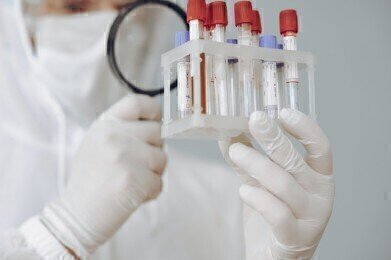Laboratory Products
Types of Sample Used in Laboratories
Jun 23 2021
From hazardous viral swabs to oil-bearing rock fragments, laboratory samples come in an array of shapes and sizes. Some laboratories are equipped to detect COVID-19 and other infectious viruses, while others are purpose-built to analyse oil-bearing rocks extracted during exploratory drilling projects. Below, we take a look at some of the different types of samples handled, prepared and analysed by laboratories operating in a range of niche sectors.
Serum samples
Serum samples are obtained from clotted blood and are used to gather detailed clinical data. As well as blood typing, serum is used to perform diagnostic tests for rubella and other viral infections. There are strict guidelines in place for the collection of blood samples, including detailed instructions outlined by the World Health Organisation (WHO).
Virology swab samples
Viral swabs are a fast and efficient way of testing for infections such as COVID-19. The USA has one of the highest testing rates in the world, with almost 500 million COVID-19 tests conducted since the start of the pandemic. Storage is key, with the Centres for Disease Control (CDC) recommending that most respiratory specimens be stored at 4°C and be processed by the laboratory within 72 hours of collection.
Urine
Naturally eliminated by the body, urine can offer detailed insight into bodily functions. Samples are used to detect disorders such as urinary tract infections, diabetes and kidney disease. Faeces, sputum and semen are other examples of samples that are naturally excreted from the body.
Core samples
Core samples are especially useful when analysing naturally-occurring materials such as rock or sediment. Samples are cylindrical in shape and obtained using a heavy-duty drill. Core samples used in oil exploration are usually between 27 to 54 metres long, though they’re divided up into sections before being sent to the laboratory for geologic analysis. For applications such as dendrochronology (tree ring dating) shorter samples of one-metre are adequate.
Preparing and processing samples
Once samples arrive at the lab it’s critical they undergo the correct preparation and processing procedures. Automated technologies such as the XPR Automatic Balance from Mettler Toledo help to minimise the risk of out-of-specification (OOS) errors and improve the accuracy and reliability of results. Find out more about how the next-generation automatic weighing and dispensing instrument heightens efficiency, improves accuracy and reduces exposure risk in ‘How gravimetric sample preparation is helping pharmaceutical manufacturers meet the demands of consumers, regulators, and the market.
Digital Edition
Lab Asia 31.2 April 2024
April 2024
In This Edition Chromatography Articles - Approaches to troubleshooting an SPE method for the analysis of oligonucleotides (pt i) - High-precision liquid flow processes demand full fluidic c...
View all digital editions
Events
Apr 28 2024 Montreal, Quebec, Canada
May 05 2024 Seville, Spain
InformEx Zone at CPhl North America
May 07 2024 Pennsylvania, PA, USA
May 14 2024 Oklahoma City, OK, USA
May 15 2024 Birmingham, UK


.jpg)















